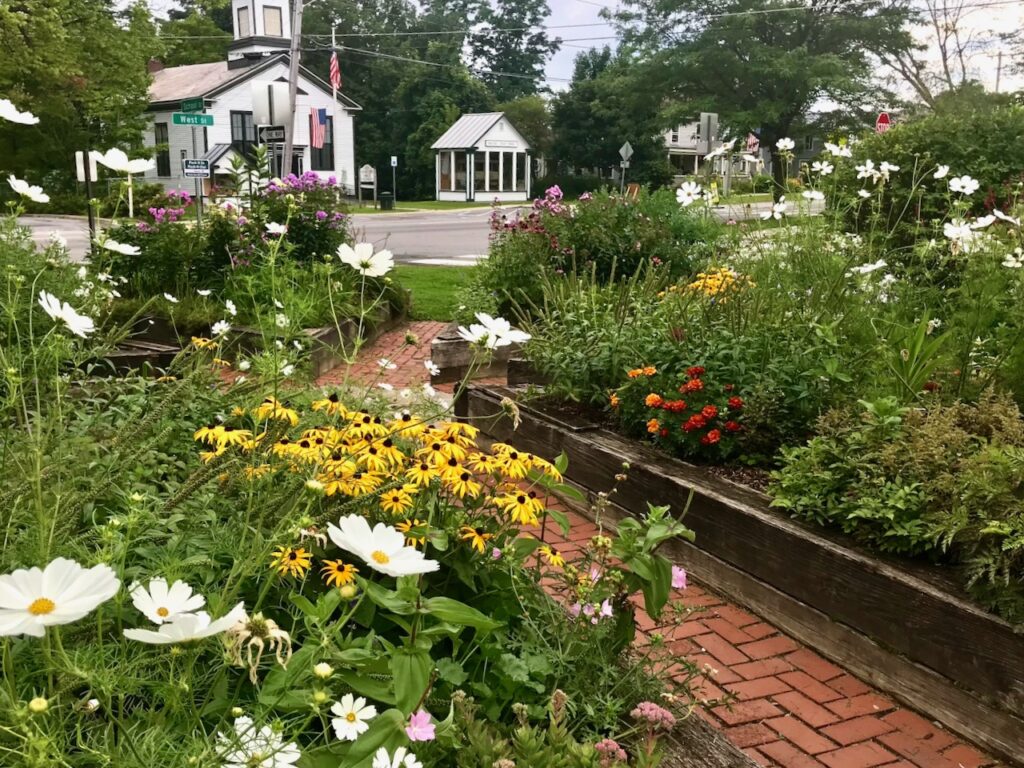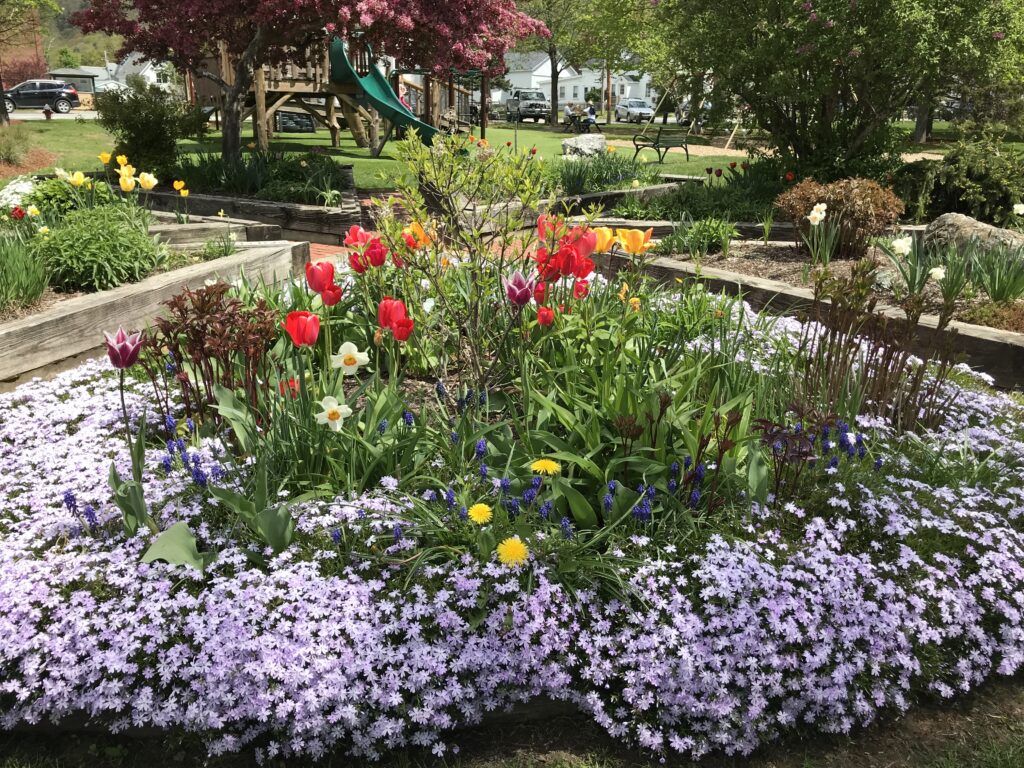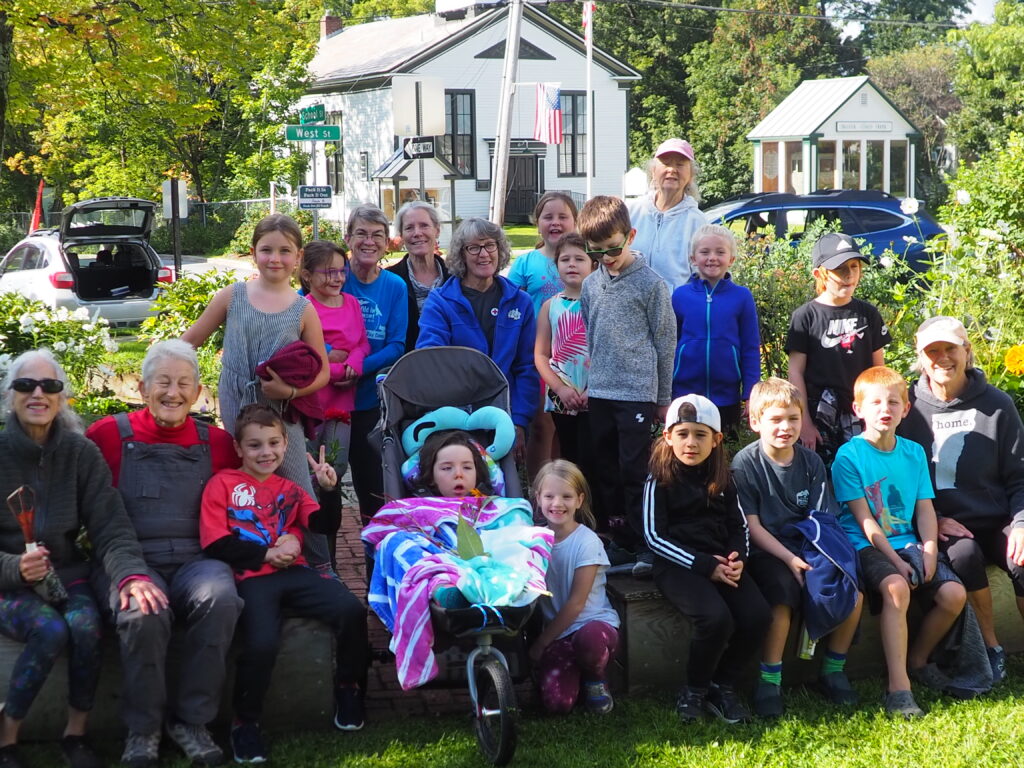Birth of the Bristol Peace Garden
The Peace Garden in Bristol is a community project. It has been made possible by members of the elementary school, local businesses, churches, town services and by interested individuals and neighboring towns. The Outlook Club donated generous funds as they were disbanding as an organization. Ben and Jerry’s also provided funding through a community grant.
The idea for the Peace Garden was conceived by a group of interested teachers at Bristol Elementary School in the fall of 1989. They were inspired by the National Peace Garden in Washington, DC. Instead of sending a donation to the garden in Washington, it was decided that a peace garden could be made right here in Bristol.
The garden was designed by a group of students at Bristol Elementary School. Their efforts were made possible with the volunteer help of David Raphael, a local professional landscape designer.
The circular garden contains seven wedges. Each wedge represents a continent, and the plants grown in each wedge are indigenous to that continent. The exception, of course, is Antarctica, where all the plants are white to represent the cold and snow.
The Peace Garden’s dedication program, October 24, 1991
Blossoming of the Garden
The Peace Garden adorns the Bristol Green for over half the year.
As our days grow longer and warmer, the continents erupt with color. Long-awaited snowdrops pop up in March, followed by clusters of crocuses. With April come sweetly-scented daffodils, carpets of creeping phlox and eventually, a parade of tulips.

If you walk through the garden regularly, you will catch each new flower in its glory. Along with blossoms, you will see pollinating insects in endless species enjoying the bounty.
Spring also offers flowering shrubs—intoxicating lilacs blossom in May as buds swell on peonies, ants feasting on them until they burst into full glory. By June, the Peace Garden is awash in color. Summer unfolds. Showy azaleas, intricate baptisia, tall phlox and spiky bee balm each take their turn at center stage.
As summer winds down, a rainbow of zinnias share the spotlight with black-eyed Susans. Eventually, we are left with earthy shades of chrysanthemums and golden maple leaves blanketing the paths. Then it is time to put the garden to bed for the winter.

The Gardeners Who Tend It
Over the years, the Peace Garden has flourished under the care of community volunteers and students from Bristol Elementary School and local Girl Scout and Boy Scout Troops.
Like all gardens, it requires ongoing attention to thrive. Each year, new perennials and annuals, trees or shrubs are added, while others must be removed. Weeding and watering, pruning and separating continue throughout the gardening season. Paths are swept and repaired.

Andrea Murnane’s second grade student gardeners from Bristol Elementary School pose with Bristol Peace Garden volunteers after working together on weeding the beds and planting mums.
Local volunteers and financial donations keep our garden growing. If you’d like to become a volunteer gardener, contact Phoebe Barash at barash.phoebe@gmail.com. Please consider supporting the Peace Garden with a check made out to Bristol Peace Garden and sent to Patty Heather-Lea, 38 Pleasant Street, Bristol, Vermont 05443.
If you walk by while one of us is gardening, please stop by and say hello. The original group of Bristol students who conceived the Peace Garden imagined a lovely place where folks would enjoy themselves, where people would gather and chat peacefully across continents. The garden has indeed become a refuge where locals and visitors alike enjoy relaxing, reflecting, visiting and watching children play—exactly what Bristol students envisioned over 30 years ago. Many of those founding students, now grown and parents themselves, bring their children to the garden. The Bristol Peace Garden has no political affiliation.